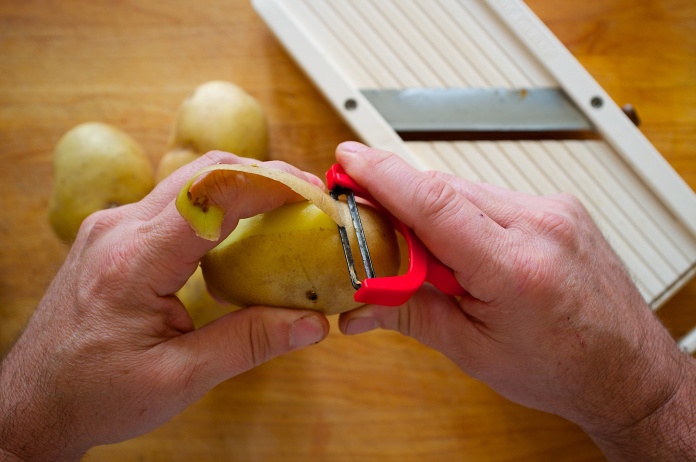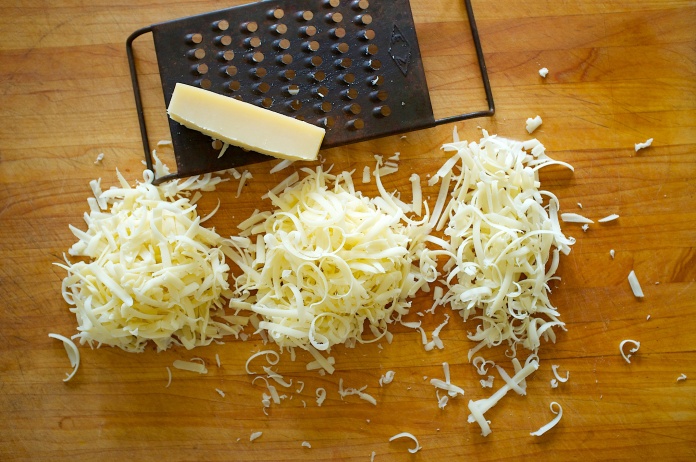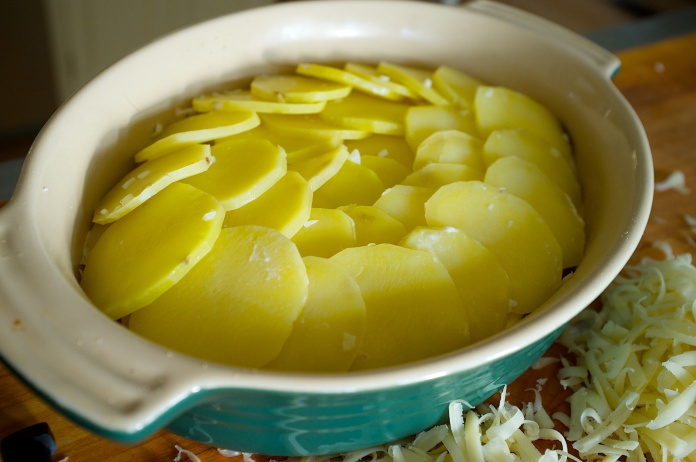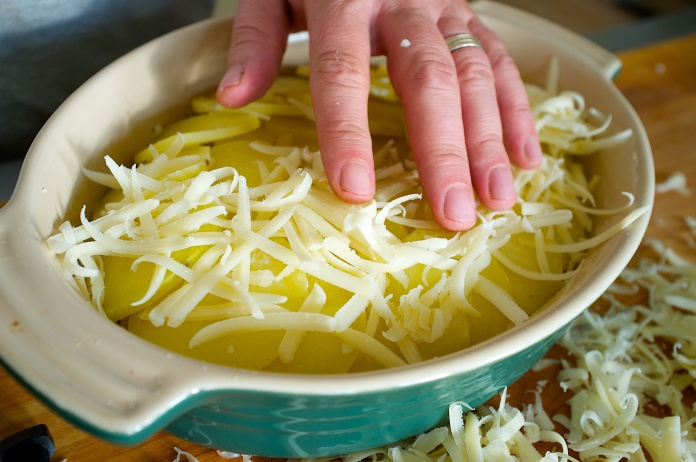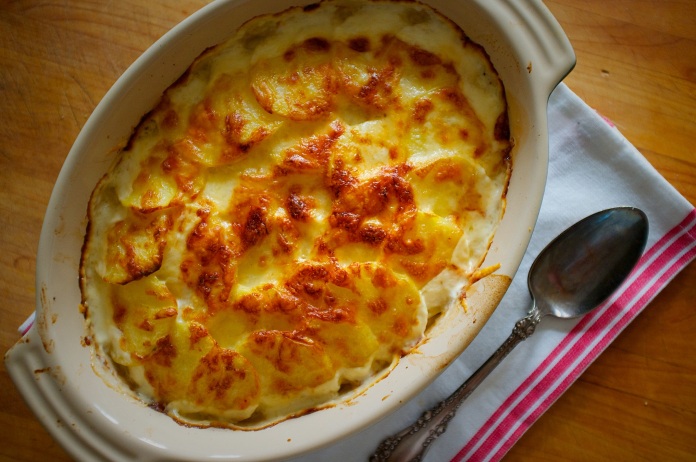Have you ever had a friend who knows no strangers? The kind of genuine person to whom everyone in the room gravitates — someone who doesn’t have to work at meeting new people, because somehow it is coded into their DNA for others to like them?
For me a potato gratin is just such a friend. A friend who hangs out with all the cool entrees too: a mustard crusted beef tenderloin taking a bath in a flavorful sauce or a perfectly roasted chicken with crackly brown skin are its best friends.
But, to its credit, a potato gratin knows enough to complement all the other dishes and, with the exception of a few rules, remains unfussy enough not to need a recipe and somehow is always perfectly put together for any holiday gathering.
How to Make Potato Gratin Without a Recipe
1. Peel your potatoes. For a 10-inch oval gratin pan, I like to use six to eight medium-sized Yukon Gold potatoes — about 2 1/2 pounds. (Don’t worry: If you overdo it, you can snack on leftovers after step 6.)
2. Slice the potatoes an 1/8-inch thick, ideally on a mandoline right into a heavy bottomed pot. Add a few minced cloves of garlic, about a teaspoon of salt, and roughly equal parts of water and milk to cover the potatoes.
3. Bring it to a gentle boil over medium heat and cook the potatoes till just tender but not falling apart, then drain. By cooking the potatoes most of the way through in flavorful liquid, you don’t have to worry about exact quantities of liquid and seasoning later on.
4. While the potatoes are cooling, grate approximately 2 1/2 cups of Gruyère or Comté cheese — they are traditional but expensive. Other cheese in the family would be gouda, fontina, or American Gruyère.
5. Get out an oval gratin, or any casserole, pie pan or dish you choose. Just take note: with a smaller circumference dish you have more creamy interior and less crunchy top and, obviously, the reverse is true for a larger gratin. Place around half the potatoes into the gratin (they don’t need to look pretty, yet). Season with salt and white pepper. Top with half the cheese and drizzle about 1/2 cup of cream over the top.
6. Starting with one slice of potato placed in the middle of the gratin, spiral the potatoes around until you reach the gratin edges. Make it look pretty — it makes a difference.
7. Top with the remaining cheese, then drizzle another 1/2 cup or so of cream over the top and around the edges so it gets to the bottom, too.
8. Bake at 425˚ F until brown and bubbly, about 30 minutes. Don’t overcook the gratin so it dries out. You want a little cream to remain on the bottom. Serve.

